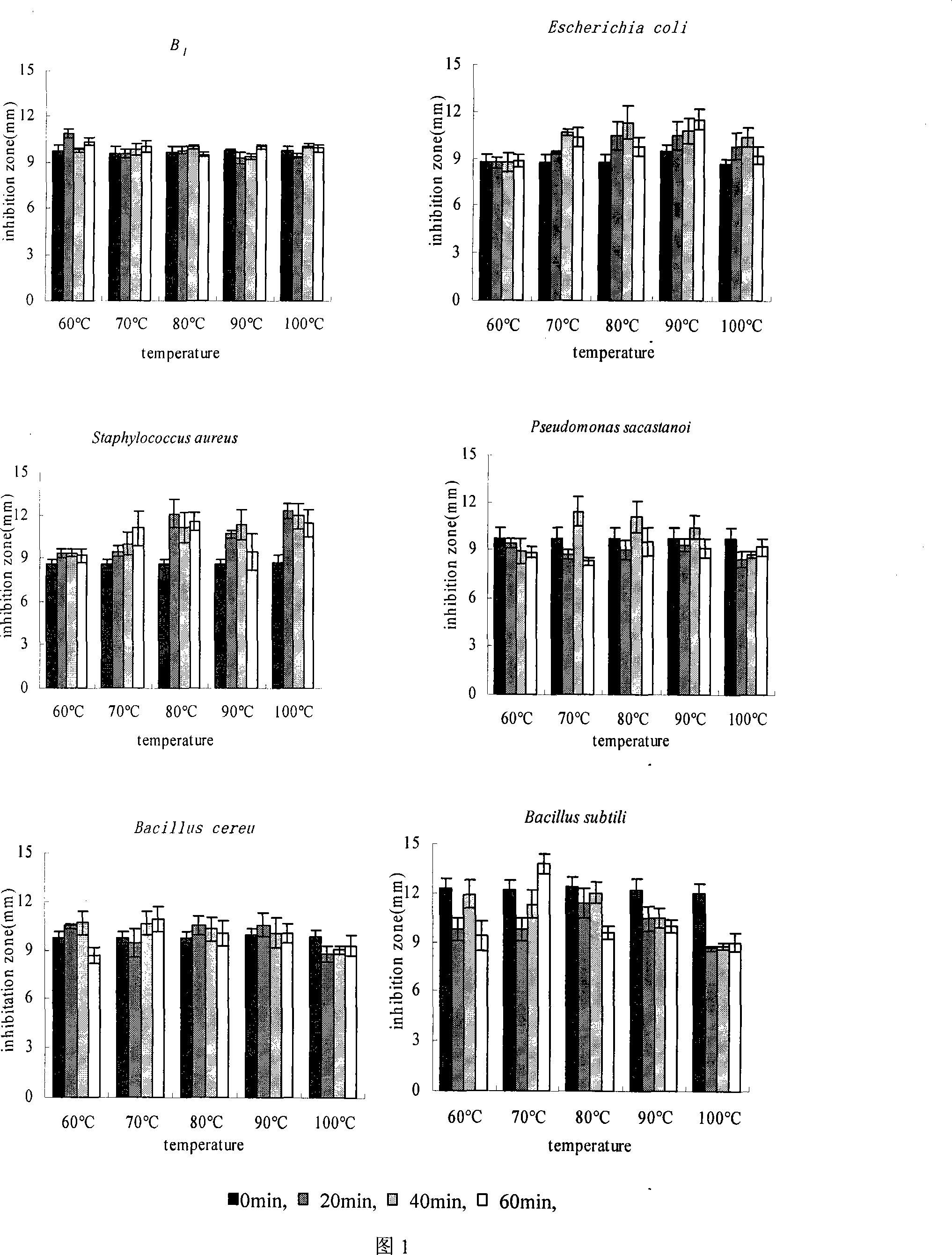Natural plant source antiseptic agent applied in low-temperature meat products
A natural anti-corrosion and meat product technology, applied in the direction of preserving meat/fish with chemicals, can solve the problems of flavor impact, prolong the shelf life of low-temperature smoked sausages, and the safety of chemical preservatives to be studied, so as to achieve low price and low cost. The effect of wide bacterial spectrum and simple production process
- Summary
- Abstract
- Description
- Claims
- Application Information
AI Technical Summary
Problems solved by technology
Method used
Image
Examples
Embodiment 1
[0013] Embodiment 1: the preparation of preservative
[0014] Cloves, star anise, and ginger are crushed respectively and passed through a 40-mesh sieve, and the powder under the sieve is extracted. Clove powder, ginger powder, and star anise powder were each extracted with 60% to 95% ethanol at a solid-to-liquid ratio of 1:10 for 3 hours, filtered to remove the residue, and the extracts of the three spices were concentrated to the stock solution (the stock solution here refers to: 1mL extract The extract containing 1g of the raw material, that is, 1g / 1mL), and then compound according to the volume ratio of 5.0-8.0 parts of clove powder alcohol extract, 1.0-2.0 parts of ginger powder alcohol extract, and 1.0-2.5 parts of star anise powder extract. The compounded preservative liquid is ready for use.
[0015] Recipe 1 Recipe 2 Recipe 3
[0016] Clove powder alcohol extract 5.0 parts 8.0 parts 6.5 parts
[0017] Ginger powder alcohol extract 2.0 parts 1.0 pa...
Embodiment 2
[0021] A main spoilage bacterium, Bacillus, was isolated from several commercially available low-temperature enemas, and it was used as the object of the antibacterial test. This strain of Bacillus is called B 1 (Identified as Bacillus subtilis). The preservative of Example 1 of the present invention carries out the minimum inhibitory concentration test. It was found that this preservative was effective against the main spoilage bacteria B in low-temperature meat products 1 The minimum inhibitory concentration is 1.25mg / ml. Sodium Benzoate on B 1 The minimum inhibitory concentration reached 25mg / ml.
Embodiment 3
[0022] Embodiment 3: Bacteriostasis test of preservatives on other common food contamination bacteria
[0023] The strains used are as follows: Staphylococcus aureus (CICC10201), Pseudomonas aeruginosa (CICC 10204), Bacillus cereus (CICC10024), Escherichia coli (CICC10003), subtilis Bacillus subtilis (CICC6060) were all obtained from China Center for Industrial Microorganism Culture Collection (CICC).
[0024] Antibacterial test using filter paper method
[0025] Preparation of filter paper sheets: Use a puncher to make 102-type Xinhua filter paper into discs with a diameter of 6 mm, put them into a dry and clean beaker, sterilize them with moist heat at 121°C for 30 minutes, and dry them for later use.
[0026] Determination of the antibacterial effect of the extract: Use a sterile test tube to draw 0.1mL of a suitable concentration of bacterial suspension and add it to the surface of the plate medium that has been poured, and spread evenly; After the ethanol was evaporated...
PUM
 Login to View More
Login to View More Abstract
Description
Claims
Application Information
 Login to View More
Login to View More - R&D
- Intellectual Property
- Life Sciences
- Materials
- Tech Scout
- Unparalleled Data Quality
- Higher Quality Content
- 60% Fewer Hallucinations
Browse by: Latest US Patents, China's latest patents, Technical Efficacy Thesaurus, Application Domain, Technology Topic, Popular Technical Reports.
© 2025 PatSnap. All rights reserved.Legal|Privacy policy|Modern Slavery Act Transparency Statement|Sitemap|About US| Contact US: help@patsnap.com

